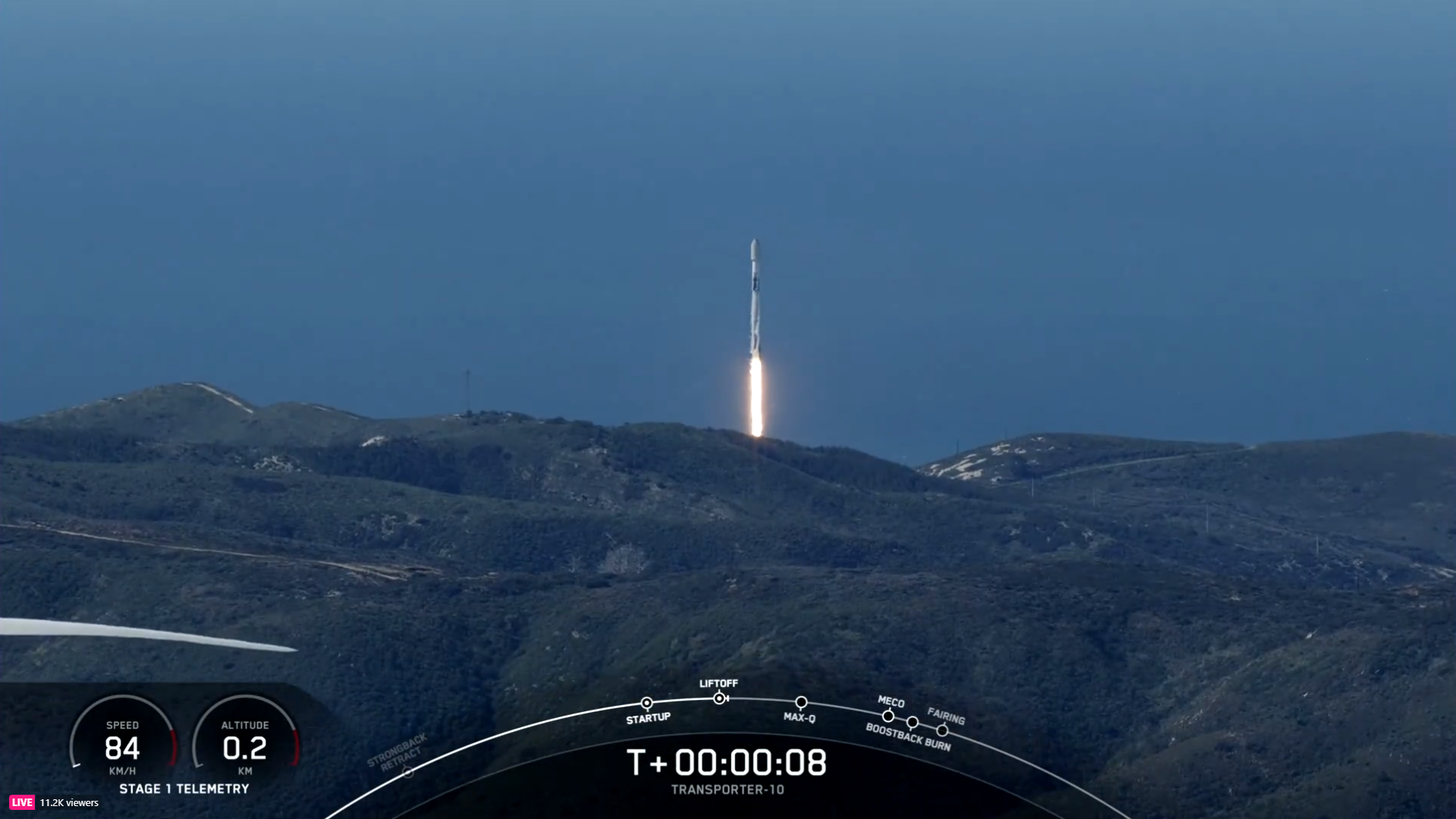
SpaceX will attempt as many as three back-to-back Falcon 9 missions from two U.S. coastlines in under a day, following Sunday’s successful liftoff of Crew-8 from Florida’s Kennedy Space Center (KSC)—with NASA astronauts Matt Dominick, Mike Barratt and Jeanette Epps, plus Russian cosmonaut Aleksandr Grebenkin, currently en-route to a six-month berth aboard the International Space Station (ISS)—and Monday’s 2:05 p.m. PST launch of a multi-customer Transporter payload “stack” from Vandenberg Space Force Base, Calif., with a Starlink flight also expected later tonight from Cape Canaveral Space Force Station, Fla. If accomplished, it will mark the second occasion in the last three weeks that the Hawthorne, Calif.-headquartered launch provider has achieved three missions within a period of less than 24 hours.
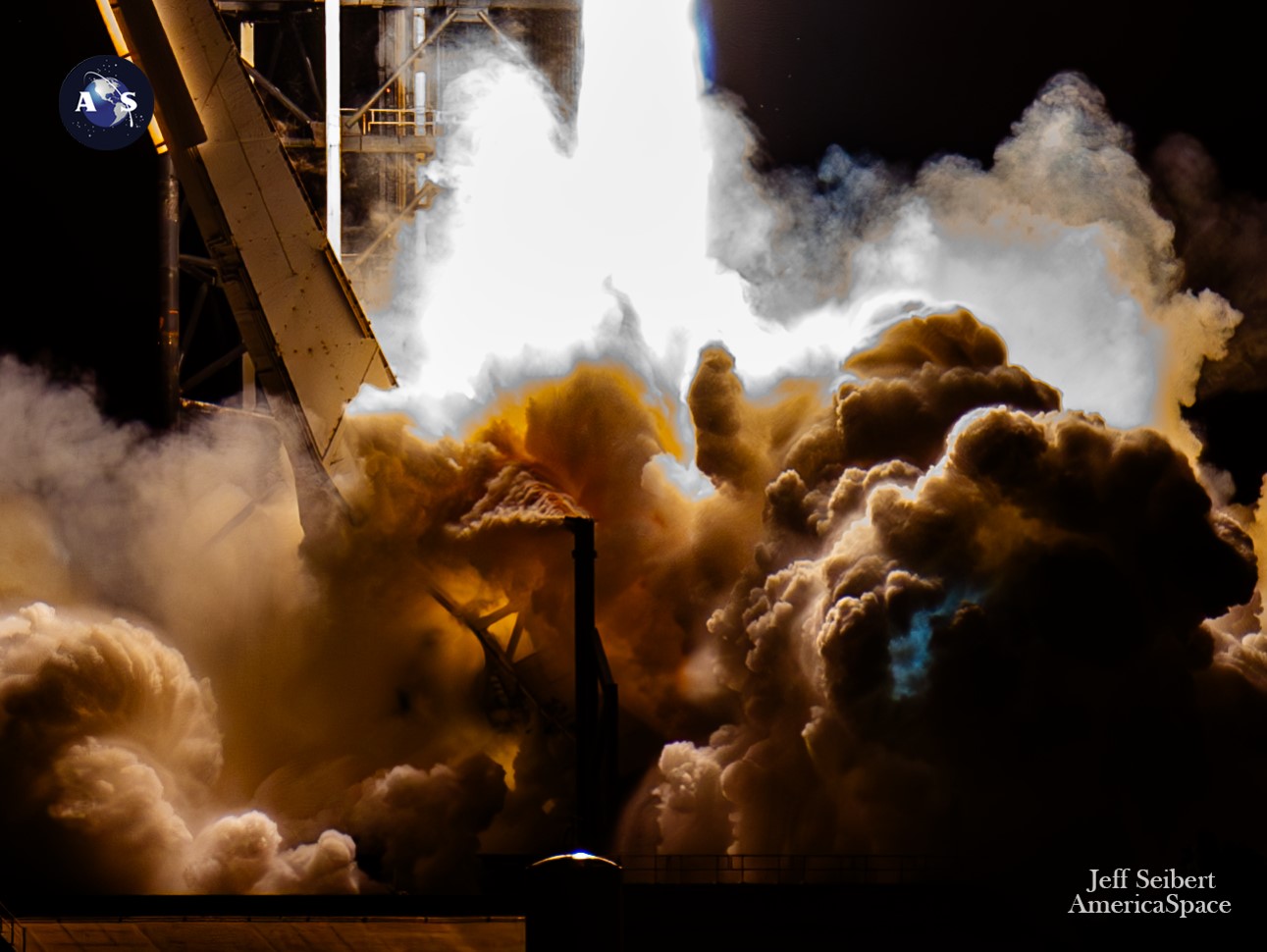
The beginning-of-the-week action got underway at 10:53 p.m. EST Sunday, when the brand-new B1083 booster—the second Falcon 9 core to join SpaceX’s burgeoning fleet so far in 2024—sprang from historic Pad 39A at Florida’s Kennedy Space Center (KSC), carrying Dragon Endeavour and her Crew-8 quartet of Dominick, Barratt, Epps and Grebenkin. Their launch to the ISS came after several days of weather-induced delay, caused by unfavorable conditions along the Falcon 9’s ascent “corridor”, which might have put wind speeds and wave heights outside allowable tolerances should the crew have endured an in-flight abort and been forced to make an emergency splashdown in the Atlantic Ocean.
NASA does not permit Falcon 9 launches within 48 hours of a Crew Dragon launch, due to insufficient time for data reviews, so it came as little surprise when SpaceX announced plans to continue an aggressive March manifest only 15 hours after Crew-8 departed Earth. Its second launch of the month (and its 21st inside the year’s ninth week) was scheduled from Vandenberg’s Space Launch Complex (SLC)-4E at 2:05 p.m. PST, with a backup opportunity at the same time Tuesday afternoon.
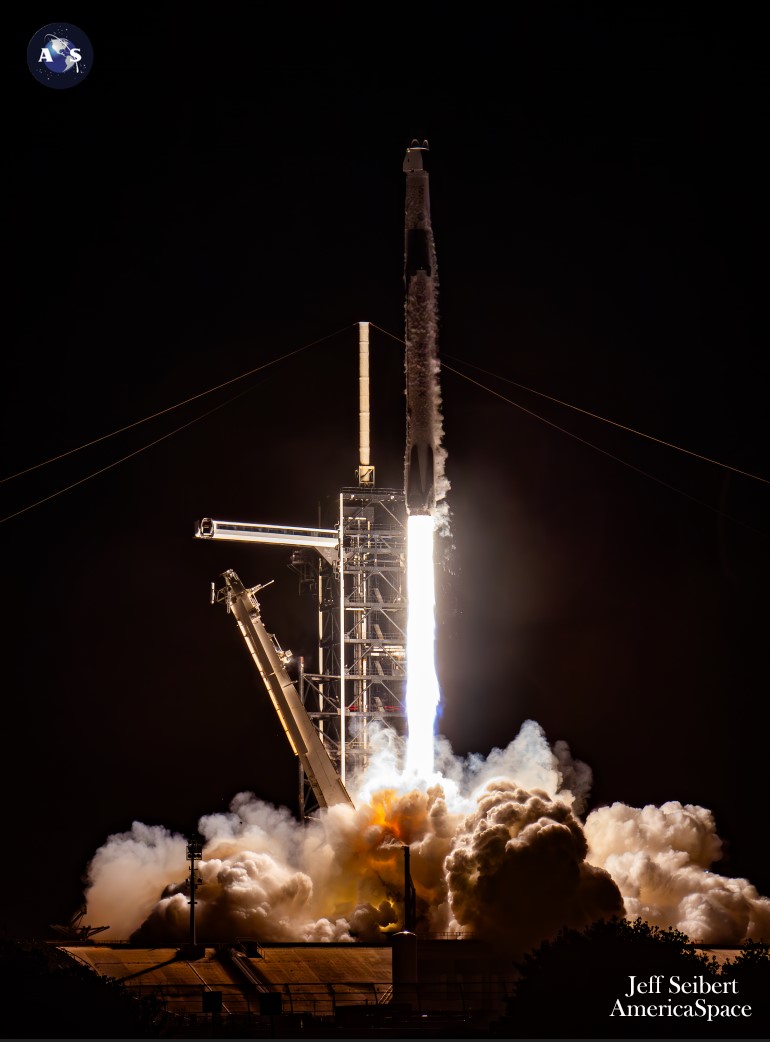
Flying the mission was B1081, which came online for the first time last August to deliver Dragon Endurance and her Crew-7 quartet of NASA astronaut Jasmin Moghbeli, Denmark’s Andreas Mogensen of the European Space Agency (ESA), Satoshi Furukawa of the Japan Aerospace Exploration Agency (JAXA) and Russian cosmonaut Konstantin Borisov to the ISS, where they currently reside. Two additional launches of B1081 last November and December delivered SpaceX’s CRS-29 Cargo Dragon for a month-long research stay at the station and a 23-strong batch of Starlink internet communications satellites to orbit.
Most recently, early last month B1081 launched NASA’s $805 million Plankton, Aerosol, Cloud, Ocean Ecosystem (PACE) mission to perform critical measurements of our planet’s oceans, atmosphere and climate on a global scale. Flying Monday’s mission only 25 days, 15 hours and 32 minutes after lofting PACE, she sets a new launch-to-launch record for a single Falcon 9 in 2024 and the fourth-fastest turnaround of any SpaceX booster to date.
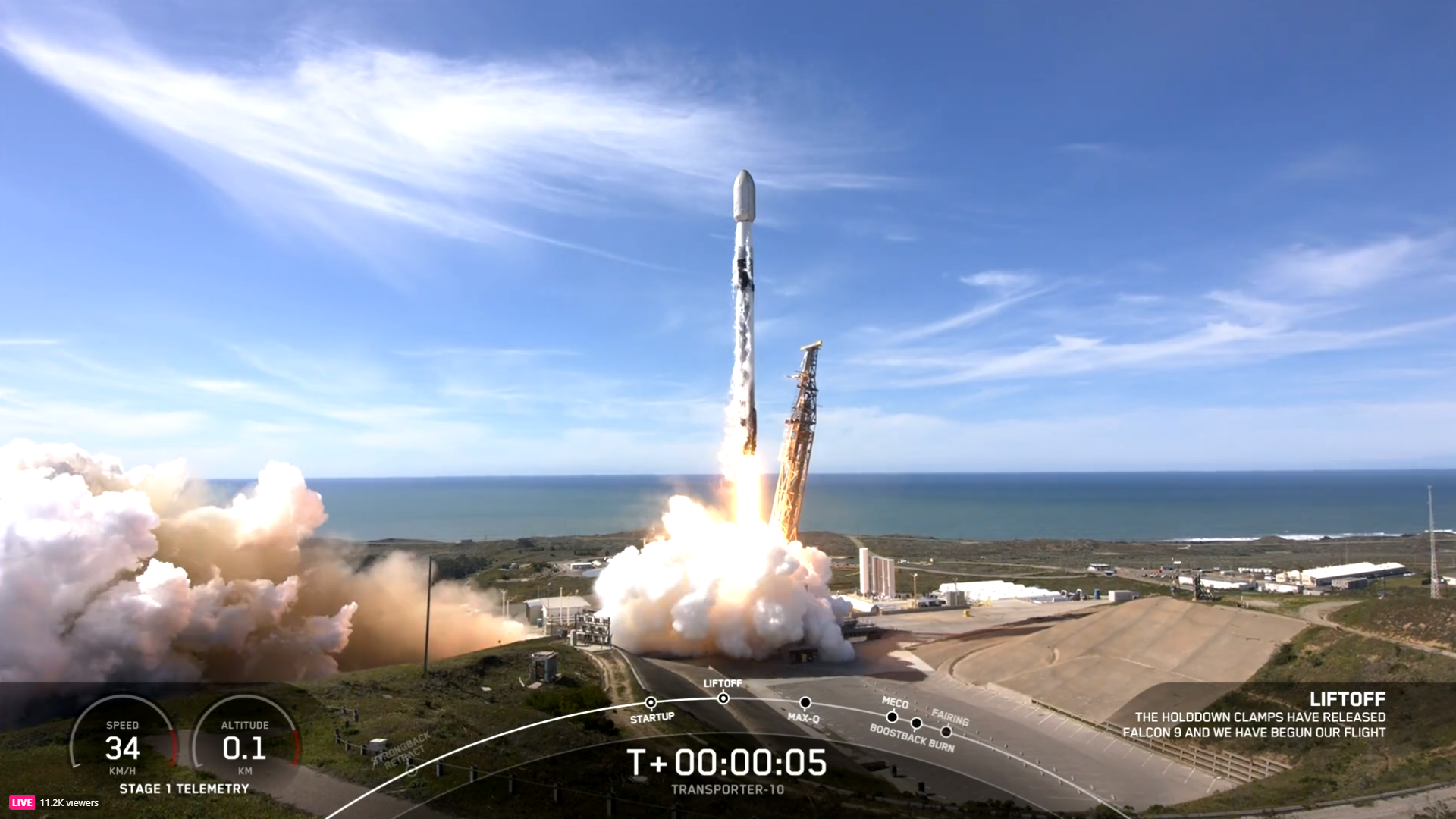
With Crew-7, CRS-29, PACE and 23 Starlinks under her belt, B1081 pushed her payload-lifting numbers to new heights tonight with the tenth Transporter “stack”, totaling 53 CubeSats, microsats and a hosted payload for a range of customers spanning the United States, South Korea, Australia, Japan, Mongolia, Taiwan, Argentina, Belgium, France, Spain and the United Kingdom. Their objectives run the gamut from Earth observations to technology demonstrations and observations of atmospheric methane to an in-space rendezvous, docking and refueling exercise.
As its name implies, Transporter-10 is SpaceX’s tenth flight of a Transporter stack since January 2021. Those ten missions have been executed using six Falcon 9 boosters and delivered 833 small satellites—including miniaturized CubeSats and PocketQubes—for more than 50 sovereign nations in support of a smorgasbord of disciplines ranging from Earth observations, remote sensing and meteorology to technology, communications and navigation, from Signals Intelligence (SIGINT), education and amateur radio to Internet of Things (IoT), Ultra-High-Definition (UHD) streaming and Automatic Identification System (AIS) marine tracking and from X-ray astronomy, astrobiology and ionospheric research to reconnaissance, space weather forecasting and air-traffic management.
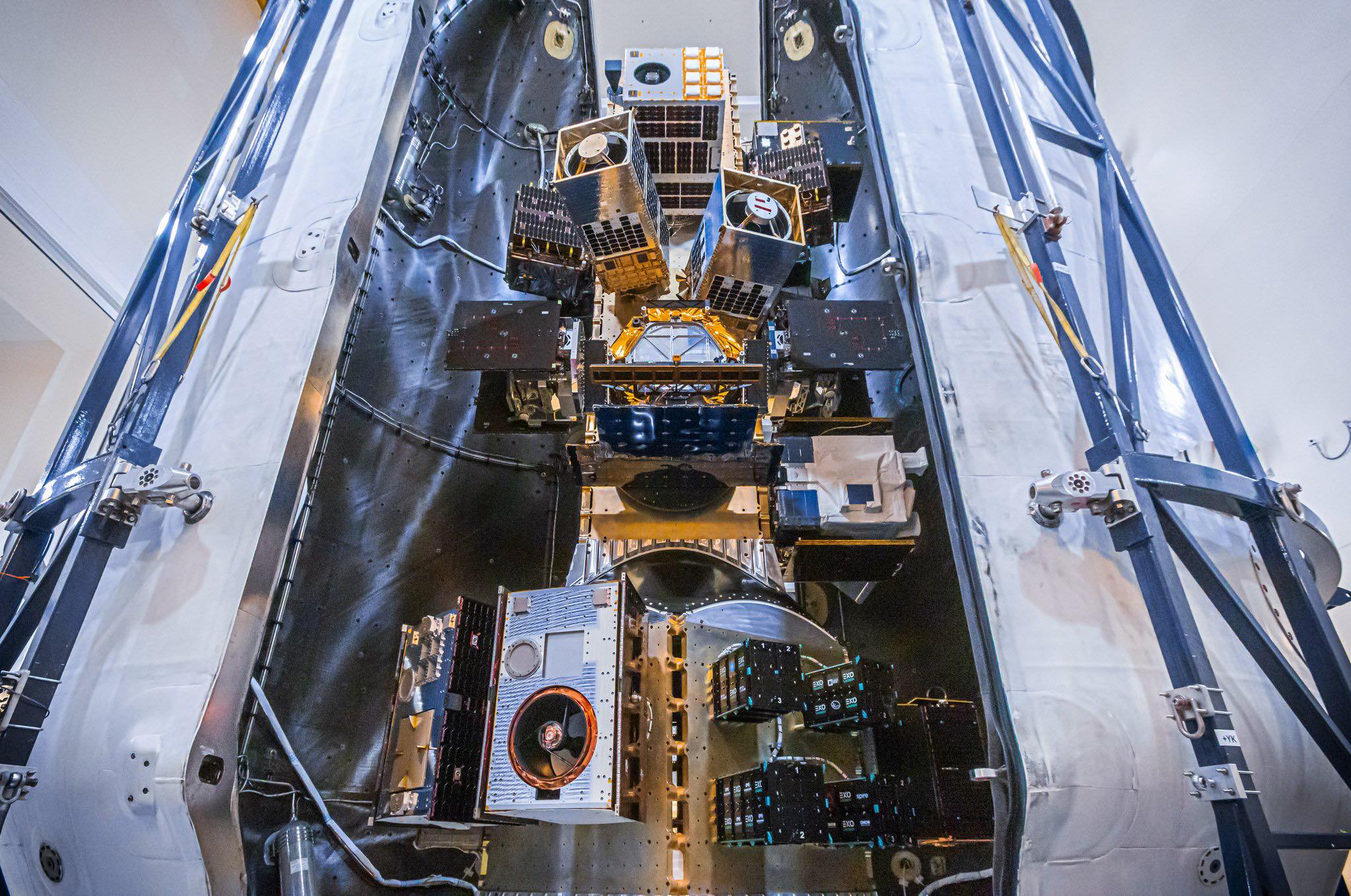
Notably, Transporter-1 carried 143 satellites totaling 11,000 pounds (5,000 kilograms) and remains the greatest number of discrete payloads ever orbited by a single U.S. launch vehicle. Two years ago, Transporter-5 carried a first-of-its-kind robotic metals-cutting demonstration and the Transporter program has facilitated the launches of the first national satellites of Albania, Kuwait and Armenia.
Tonight’s mission was the fourth Transporter haul since April of last year to be launched out of Vandenberg, the six prior flights having flown from Florida’s Cape Canaveral Space Force Station. Liftoff occurred on time at 2:05 p.m. PST, as B1081 roared into serene California skies and powered the 230-foot-tall (70-meter) Falcon 9 uphill for the opening 2.5 minutes of ascent, before returning to an on-point touchdown on solid ground at Vandenberg’s Landing Zone (LZ)-4.
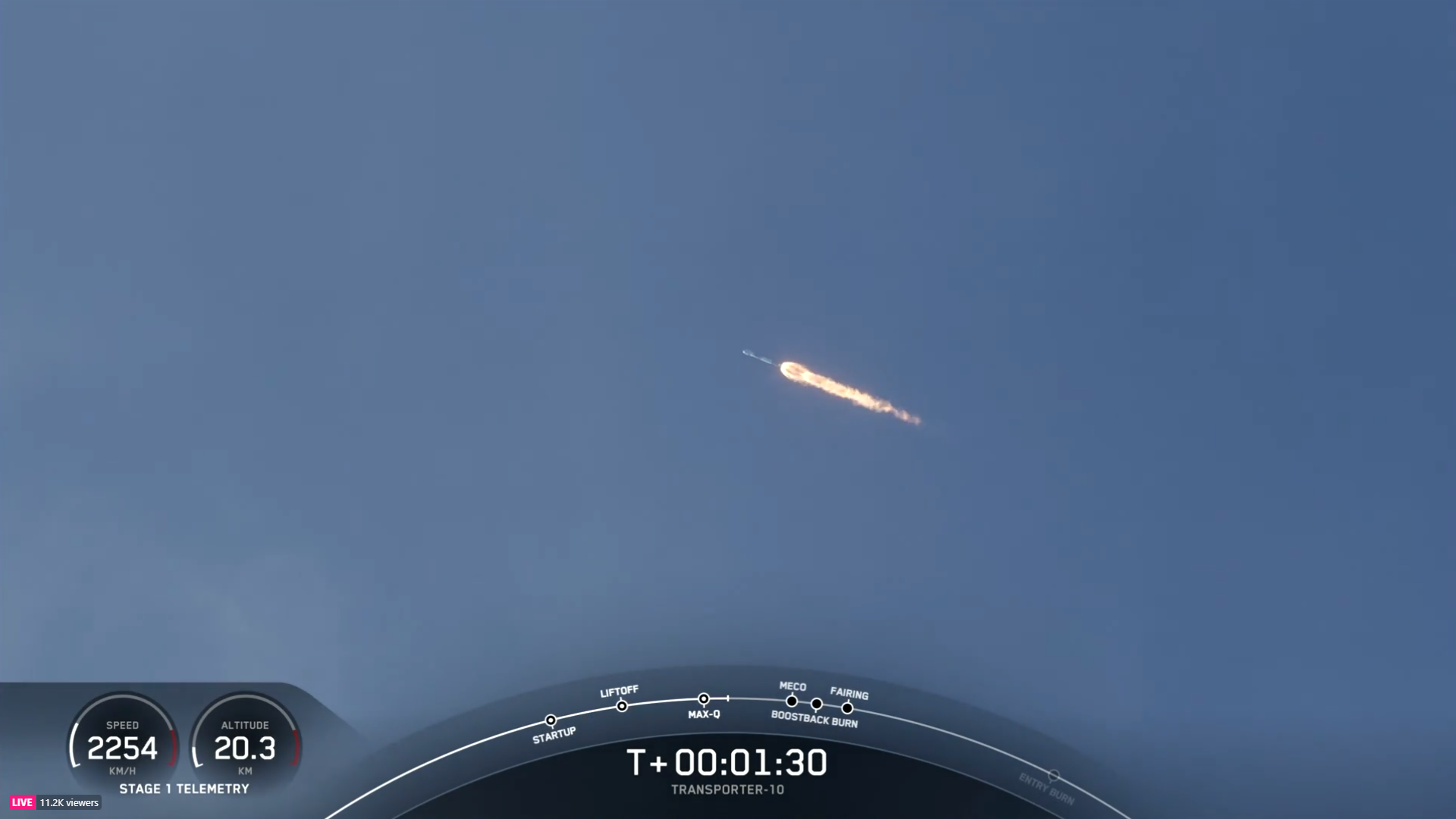
Meanwhile, the Merlin 1D+ Vacuum engine of the booster’s second stage was tasked with multiple duties, with no fewer than three “burns” planned: an initial six-minute push, followed by a 40-minute coasting phase, before relighting twice—for only a second apiece—at 104 minutes and 145 minutes into the flight to facilitate the deployment of the 53 payloads into their requisite orbital locations.
As this AmericaSpace article was being prepared, deployment of the first payload (the United Kingdom’s HAMMER Earth observation CubeSat) was targeted at 53 minutes into the mission and the last (the joint U.S./New Zealand-built MethaneSat) was set to depart the Falcon 9’s second stage at two hours and 33 seconds past liftoff. The 770-pound (350-kilogram) MethaneSat will employ a powerful on-board spectrometer to conduct detailed measurements of atmospheric methane concentrations.
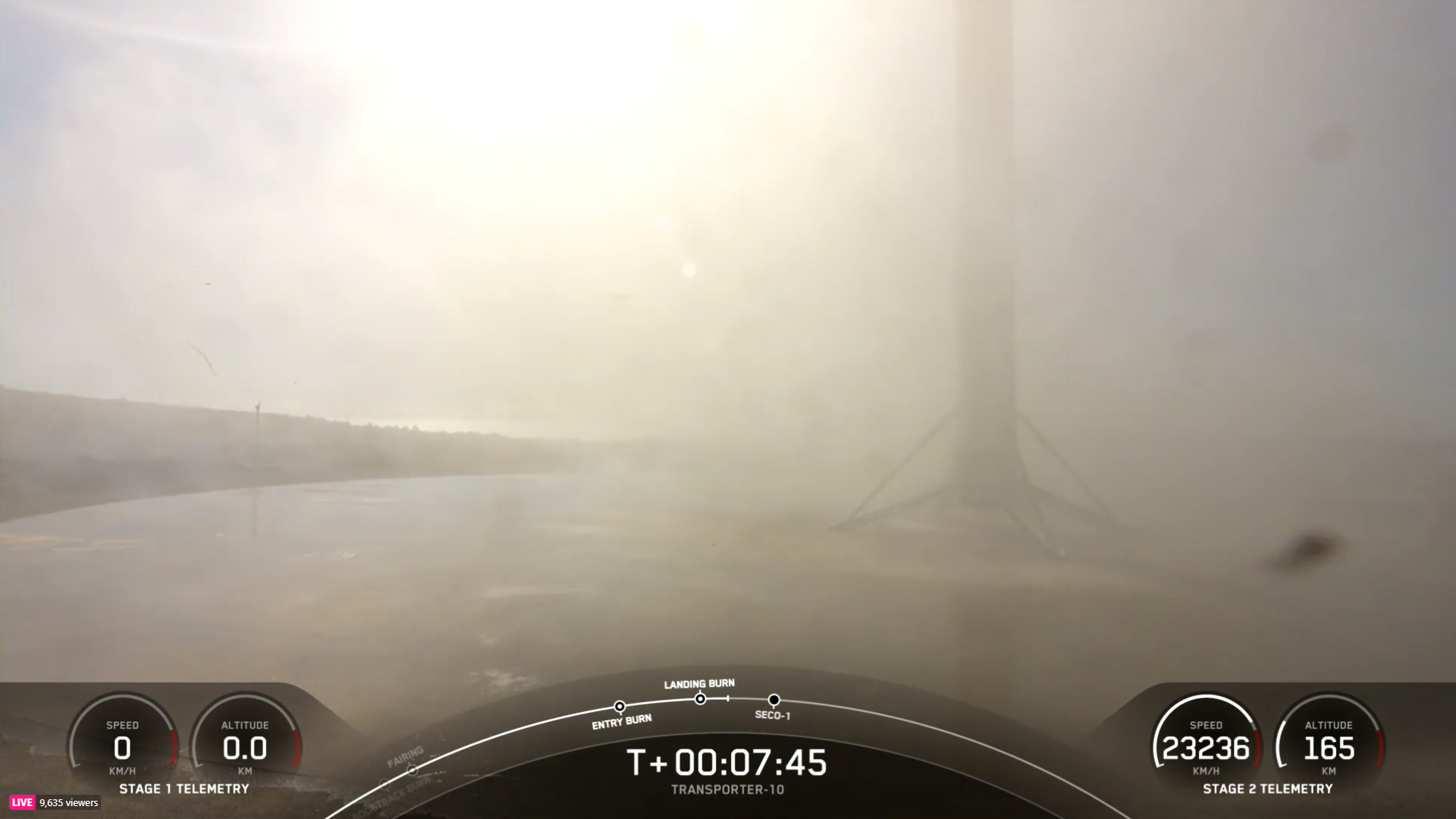
And if all goes well, before the final Transporter-10 payload has deployed, a third Falcon 9 is set to take flight with 23 Starlink low-orbiting internet communications satellites from Space Launch Complex (SLC)-40 at Florida’s Cape Canaveral Space Force Station, with T-0 targeted for 6:56 p.m. EST Tuesday. Tonight’s launch attempt benefits from an expansive four-hour “window”, extending through 10:54 p.m. EST, with additional opportunities beginning at 6:28 p.m. EST Wednesday if needed.
Flying this third Falcon 9 mission within the span of a single day will be B1073, marking the 13th launch of her career and her second so far in 2024. And with its earliest T-0 point timed for one hour and 51 minutes after Transporter-10, it might also set a new record for the shortest interval between pairs of SpaceX missions, eclipsing the two hours and 54 minutes logged between a Falcon Heavy launch of the U.S. Space Force’s highly classified USSF-52 and a Starlink-laden Falcon 9 last 29 December.
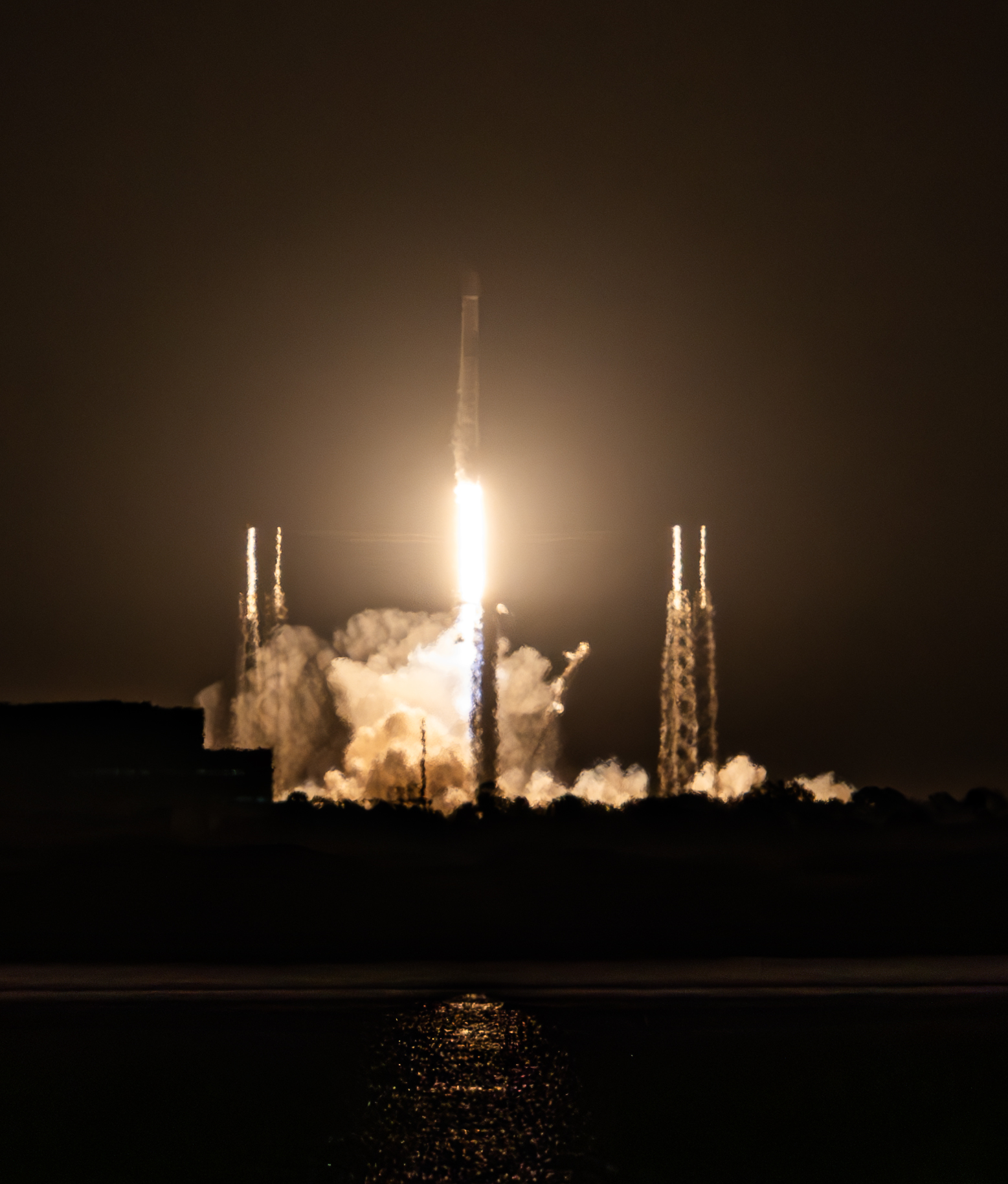
Weather conditions for tonight’s next launch look about 80-percent-favorable, with a slight chance of violating the Cumulus Cloud Rule and Anvil Cloud Rule. “A weak frontal boundary will remain within the vicinity of Central Florida through Monday, keeping warm temperatures and moist conditions in place,” noted the 45th Weather Squadron at Patrick Space Force Base in its Monday update.
“Isolated showers and thunderstorms will be possible generally during daylight hours, with activity waning overnight,” the 45th added in its summary. “During the initial launch window Monday evening, any convective activity remaining is expected to be displaced across the interior and western portions of the peninsula, but a few showers and lingering anvils may persist locally.”




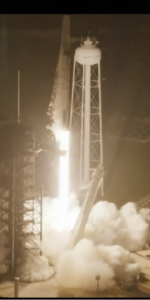
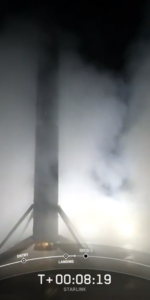
7 Comments
Leave a Reply7 Pings & Trackbacks
Pingback:SpaceX Launches Record-Setting Falcon Missions, Under Two Hours Apart - AmericaSpace
Pingback:SpaceX Targets Back-to-Back Falcon 9 Missions, Next Starship Launch - AmericaSpace
Pingback:SpaceX Launches Tenth Vandenberg Flight of Year, Looks to CRS-30 Space Station Resupply Mission on Thursday - AmericaSpace
Pingback:Delayed Vandenberg Falcon 9 Mission Launches, Kicks Off Busy April for SpaceX - AmericaSpace
Pingback:SpaceX Primed to Complete Friday Double-Header of Falcon 9 Missions - AmericaSpace
Pingback:SpaceX Aims to Complete Weekend Triple-Header With Tonight’s Bandwagon-1 Launch - AmericaSpace
Pingback:SpaceX Completes Weekend Triple-Header, Launches 11-Payload Bandwagon-1 Stack - SPACERFIT